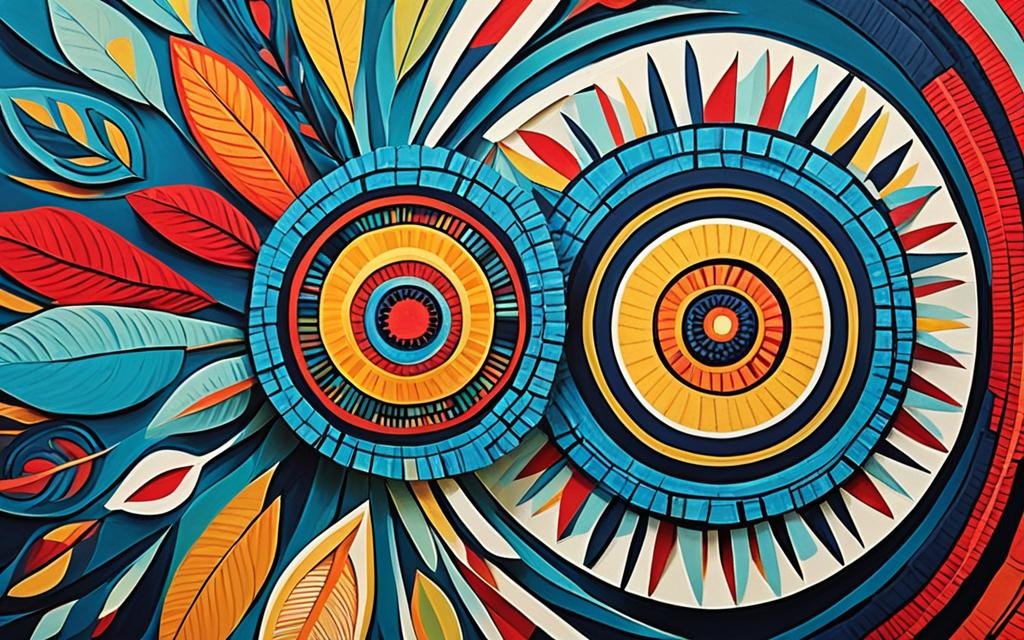From the earliest human civilizations, art has served as a mode of communication, a record of history, and a reflection of cultural identity. One such profound example lies in the realm of indigenous art, which remains a testament to the rich cultural heritage of indigenous communities worldwide. The journey of indigenous art and cultural preservation is a blend of honoring traditions through contemporary expressions, where the past and present meet in a vibrant dance of colors, forms, and ideas. This article explores how artists can balance traditional artistic practices with modern, innovative techniques to unlock boundless potential and nurture ingenuity.
Key Takeaways
- Nurturing creative talent is essential for empowering artists to balance tradition and modernity.
- Fostering imagination and unlocking artistic potential can lead to innovative artistic expressions.
- Embracing unique voices and encouraging creativity can inspire original works of art.
- Mentoring creative minds and nurturing imagination are crucial for developing artistic skills.
- Balancing traditional techniques with modern methods can unlock boundless creative possibilities.
Appreciating Traditional Indigenous Art
Indigenous art forms serve as a window to the vibrant cultural heritage of indigenous communities. Every stroke, every color, every shape holds a story, a piece of history, a cultural value. Indigenous art is more than just aesthetic appeal; it’s a mirror reflecting the life, beliefs, and history of a community. From the swirling patterns of Australian Aboriginal dot painting, telling tales of ancestral spirits, to the intricate Haida totem poles of North America representing clan lineage—every art form is a cultural narrative.
Representations of Culture
Indigenous art is a powerful medium for expressing the cultural identity and traditions of indigenous communities. The intricate designs, bold colors, and symbolic motifs found in these artworks serve as a tangible representation of the rich cultural heritage that has been passed down through generations. These art forms are not merely decorative; they are a means of preserving and sharing the stories, beliefs, and histories of indigenous peoples, allowing their cultural narratives to resonate with both local and global audiences.
Influence on Modern Art
The impact of indigenous art on the evolution of modern art is undeniable. The bold geometric patterns and vibrant color palettes of Navajo rugs, for instance, have inspired numerous modernist painters, who have incorporated these design elements into their own works. Similarly, the surreal imagery and imaginative symbolism of Inuit art have found resonance in the creations of contemporary artists, who seek to capture the mysticism and connection to the natural world that is so prevalent in indigenous artistic traditions.
Varying Art Styles
The diversity of indigenous art styles is a testament to the rich cultural tapestry of indigenous communities around the world. From the intricate Haida totem poles of North America to the mesmerizing Aboriginal dot paintings of Australia, each art form reflects the unique cultural narratives, beliefs, and artistic traditions of its creators. This diversity not only showcases the ingenuity and creativity of indigenous artists but also highlights the remarkable adaptability of their craft, as they continue to evolve and innovate while remaining deeply rooted in their ancestral heritage.
Indigenous Art and Contemporary Practice
As indigenous artists balance the act of honoring traditions through contemporary expressions, they face the key challenge of maintaining their cultural heritage while navigating the demands of the contemporary art market. The Hopi Katsina doll makers of Arizona strive to keep their craft authentic, passing down traditional techniques from generation to generation, while also adapting their work to the tastes of art collectors.
Indigenous artists are not just preservers of tradition, they are also innovators. They use art as a platform to express their unique perspectives, blending traditional techniques with modern ideas, as seen in the works of Brian Jungen, a Canadian artist of Dane-zaa descent, who creates sculptures using everyday materials transformed into striking representations of indigenous masks and totems.
Despite their resilience and creativity, indigenous artists often face numerous challenges, from issues of cultural appropriation to limited access to art markets. Yet, these challenges also fuel their art, adding depth and strength to their narratives.
| Maintaining Cultural Heritage | Innovation and Creativity | Challenges Faced |
|---|---|---|
| Passing down traditional techniques from generation to generation | Blending traditional methods with modern ideas | Cultural appropriation, limited access to art markets |
| Adapting work to the tastes of art collectors | Using art as a platform for unique perspectives | Navigating the demands of the contemporary art market |
| Keeping craft authentic and connected to cultural roots | Transforming everyday materials into indigenous-inspired sculptures | Challenges fuel their art, adding depth and strength to their narratives |
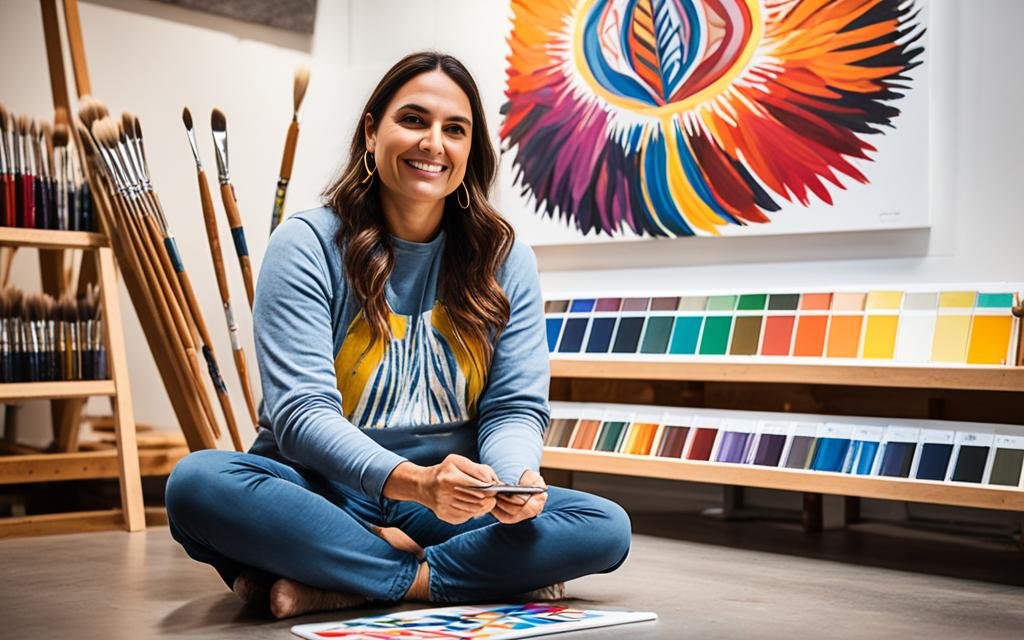
Balance Between Tradition and Modern Expressions
Respecting cultural roots is at the heart of indigenous art. It’s not just about recreating patterns and techniques passed down over generations, but also about understanding and honoring the stories, values, and beliefs they represent. An example of this is seen in the intricate batik works of the Aboriginal artists of Central Australia, where the use of vibrant modern expressions may seem contemporary, but the stories depicted in their work are deeply rooted in their ancient Dreamtime mythology.
Embracing Artistic Freedom
While honoring traditional techniques is vital, so is the ability to express one’s creativity and individuality. Indigenous artists often use their work to navigate and comment on their experiences in the modern world, blending traditional symbolism with elements of abstract expressionism.
Ensuring Authenticity
Maintaining authenticity is critical as indigenous artists tread the line between tradition and modernity. This authenticity is not just about faithful reproduction of traditional motifs, but also about maintaining a genuine connection to their cultural heritage, creating art that speaks their truth and reflects the heart of their cultures, serving as a powerful tool for cultural preservation.
Exploring Indigenous Art Worldwide
The vibrant tapestry of indigenous art spans the globe, each region offering a unique cultural narrative expressed through a diverse array of mediums and techniques. From the captivating North American indigenous art to the timeless expressions of Australian Aboriginal art and the rich heritage of Māori art from Aotearoa, these art forms serve as a testament to the resilience and creativity of indigenous communities worldwide.
North American Indigenous Art
North American indigenous art is a dynamic fusion of tradition and innovation. The Haida people of the Pacific Northwest are renowned for their distinctive formline art, characterized by flowing, interconnected lines and shapes that are showcased in traditional wood carvings as well as contemporary forms such as graphic novels and animation. This captivating art style reflects the cultural heritage and storytelling traditions of the Haida community.
Australian Aboriginal Art
Aboriginal art of Australia is a window into one of the world’s oldest continuous cultures. Dot paintings are an iconic form of Aboriginal art, where complex cultural narratives are represented through this timeless technique. The vibrant colors and intricate patterns of these works not only captivate the eye but also hold deep spiritual and symbolic significance within the Aboriginal community.
Indigenous Art from Aotearoa
In Aotearoa, also known as New Zealand, Māori art is deeply rooted in the community’s spiritual beliefs and societal structure. Carvings, weavings, and tattoo art (or Ta Moko) are among the many art forms that Māori artists have mastered. Contemporary Māori artists have been embracing the fusion of traditional motifs and techniques with modern mediums, creating a dynamic dialogue between the past and the present.
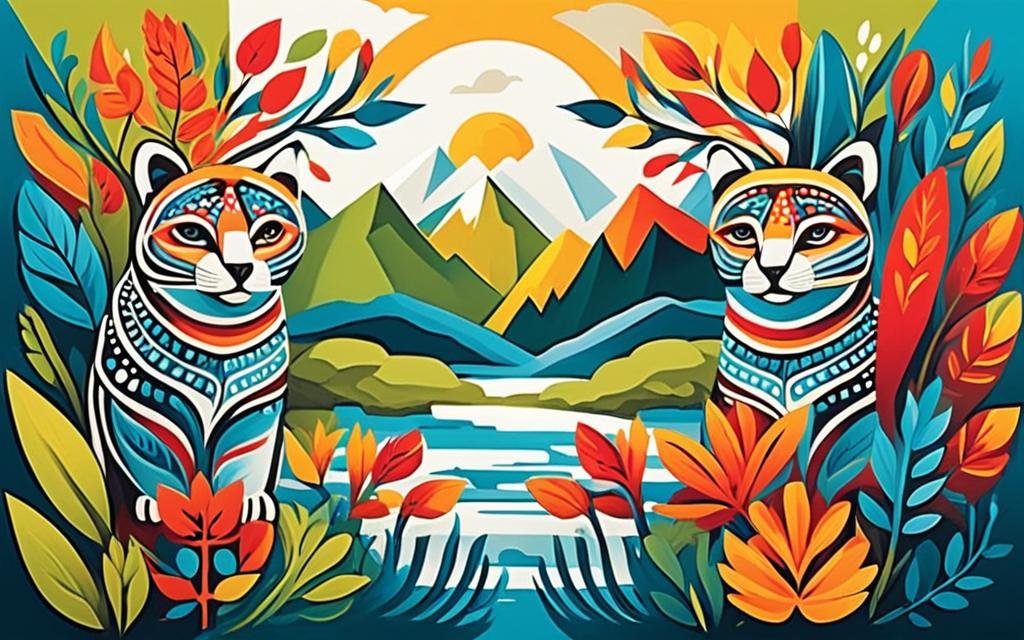
Nurturing Creative Talent
Nurturing creative talent is at the core of empowering artists to balance traditional techniques with modern artistic methods. By fostering imagination, unlocking artistic potential, and cultivating innovation, we can inspire artists to embrace their unique voices and unlock boundless creativity. Through mentorship, skill development, and a supportive environment, creative talents can be nurtured and encouraged to explore the intersection of tradition and modernity, ultimately leading to the creation of original, powerful works of art that captivate and inspire audiences.
By encouraging creativity and fostering creativity, we can unleash the potential of artists, empowering them to inspire self-expression and encourage artistic growth. Through mentoring creative minds, we can nurture imagination and unlock creative abilities, ultimately cultivating a rich tapestry of artistic expression that celebrates the unique perspectives and cultural narratives of artists from diverse backgrounds.
Reviving Ancient Traditions in Contemporary Art
The popular practice of reviving ancient and traditional crafts in contemporary art is nothing new, as artists seek to balance tradition and modern expressions. Sarah Zapata, a Peruvian American artist, uses her handweaving practice to bridge the cultural influences of Peru and evangelical Christianity in her life. Her textile works are inspired by the use of textiles in Peruvian and pre-Columbian civilizations to articulate important life events.
Spandita Malik: Preserving Indian Embroidery Legacy
Spandita Malik, an artist from India, explores the legacy of traditional Indian embroidery techniques, like Chikankari, Zardozi, and Phulkari, passed down through generations of women in her family. She collaborates with these women to create a portrait series that celebrates the cultural significance of these craft traditions.
Jordan Nassar: Reimagining Palestinian Cross-Stitch
Jordan Nassar, a second-generation Palestinian American artist, utilizes the ancient technique of Palestinian cross-stitch embroidery, known as tatreez, to reconnect with his cultural heritage and collaborate with artisans in Palestine.
Resurgence of Traditional Painting and Sculpture
In recent years, the art world has witnessed a remarkable resurgence of interest in traditional techniques of painting and sculpture. The use of tempera, a medium known for its luminosity and longevity, predates the widespread adoption of oil paints. The meticulous layering process required by tempera painting demands a level of discipline and patience that stands in stark opposition to the instantaneous nature of digital creation, offering a unique visual and tactile quality.
Tempera Painting: Luminosity and Longevity
Bronze casting, a method used since ancient times, is revered for its durability and the capacity to capture intricate details. The complex, time-consuming process of casting engages artists in a hands-on approach that has become increasingly rare in the digital age.
Bronze Casting: Capturing Intricate Details
Similarly, marble sculpture, with its association with the masterpieces of antiquity and the Renaissance, invokes a dialogue between the artist and the material that is profoundly intimate, requiring an understanding of the stone’s inherent properties and potentialities. This revival of interest in traditional techniques reflects a broader societal interest in artisanal and handmade goods, as well as a desire to engage in more physically and mentally challenging forms of artistic expression.
Marble Sculpture: Intimate Conversation with Material
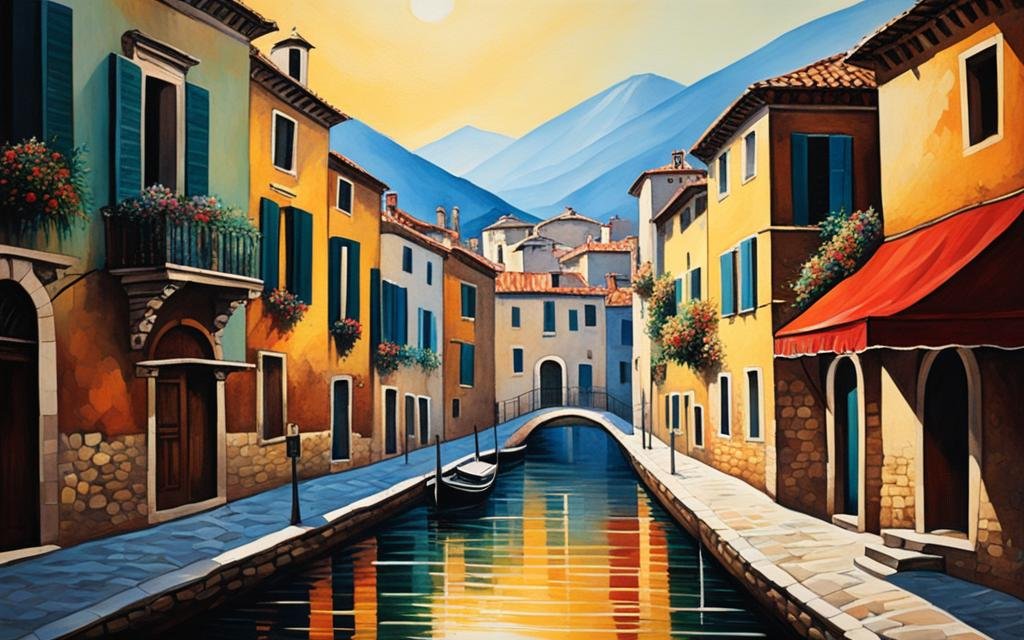
Merging Traditional and Modern Techniques
The renewed interest in traditional painting and sculpture techniques does not negate the value of technology in art; rather, it complements it. Many artists are finding ways to merge the old with the new, using traditional methods to create works that address contemporary themes or incorporating modern techniques to reinterpret historical styles. This synthesis of past and present in art creation enriches the field, offering a broader palette of possibilities for expression and experimentation.
The revival of these time-honored methods is not merely a rejection of modern technology but rather an exploration of the unique qualities these traditional techniques offer, reflecting a desire among artists to engage more deeply with their craft and to connect with a lineage of artisans whose work has transcended time.
Institutional Support for Traditional Arts
This resurgence of interest in traditional painting and sculpture techniques is facilitated by contemporary artists’ ability to study and learn these methods, often lost or overlooked, through academic programs, workshops, and masterclasses dedicated to traditional arts. Institutions and ateliers worldwide are now offering courses in these traditional art forms, catering to a growing demand for knowledge and skills in these practices. This institutional support plays a crucial role in the preservation and education of these time-honored techniques, ensuring their continued accessibility and relevance in the contemporary art landscape.
| Institution | Program Offerings | Focus Area |
|---|---|---|
| Parsons School of Design | Workshops in Tempera Painting, Bronze Casting | Traditional Arts, Preservation |
| Edinburgh College of Art | Masterclasses in Marble Sculpture, Printmaking | Traditional Arts, Education |
| National Institute of Design, India | Academic Programs in Indian Textile Techniques | Traditional Arts, Preservation, Accessibility |
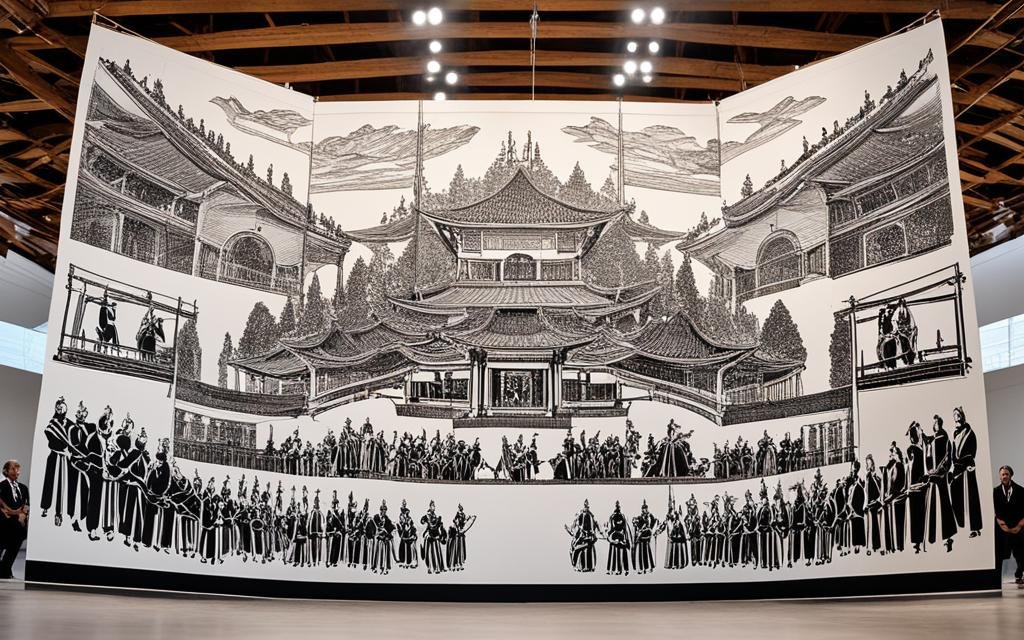
Enduring Power of Hands-On Creation
The revival of traditional painting and sculpture techniques is a testament to the enduring power of hands-on creation. It represents a desire among artists to engage more deeply with their craft, to challenge themselves in new (yet old) ways, and to connect with a lineage of artisans whose work has transcended time. This movement underscores the notion that, despite the advancements of technology, the fundamental human impulse to create and communicate through tangible mediums remains as strong as ever.
The tactile interaction with materials, the complex and time-consuming processes involved, and the intimate dialogue between the artist and the medium imbue these works with a sense of history, authenticity, and permanence that resonates with both artists and art enthusiasts alike. This resurgence highlights the physical and mental challenge inherent in traditional art forms, offering a rewarding artistic expression that is often lacking in the digital realm.
By embracing the enduring power of hands-on creation and tangible mediums, artists are able to forge a deeper connection with their audience, communicating through the artistic communication of their craft. This movement not only preserves the legacy of traditional techniques but also inspires a new generation of creators to explore the boundless possibilities that arise from the human impulse to create.
Conclusion
In conclusion, the journey of nurturing creative talent and balancing traditional techniques with modern artistic methods is a multifaceted endeavor that celebrates the enduring power of hands-on creation and the preservation of cultural heritage. By fostering imagination, unlocking artistic potential, and cultivating innovation, artists are empowered to embrace their unique voices and explore the intersection of tradition and modernity, giving rise to original, captivating works of art.
This resurgence of interest in reviving ancient traditions in contemporary art, coupled with institutional support and a growing appreciation for the tactile interaction with materials, underscores the fundamental human desire to create and communicate through tangible mediums, transcending the constraints of time and technological advancements. As artists continue to merge the old with the new, they forge a path towards a future where the rich tapestry of cultural narratives is woven into the fabric of modern artistic expression.
The balance between nurturing creative talent, preserving cultural heritage, and embracing artistic innovation is a testament to the enduring power of hands-on creation. With the support of institutions and a renewed appreciation for the physical and mental challenges inherent in traditional techniques, artists are empowered to push the boundaries of artistic expression, blending the old and the new to create works that captivate and inspire audiences worldwide.

